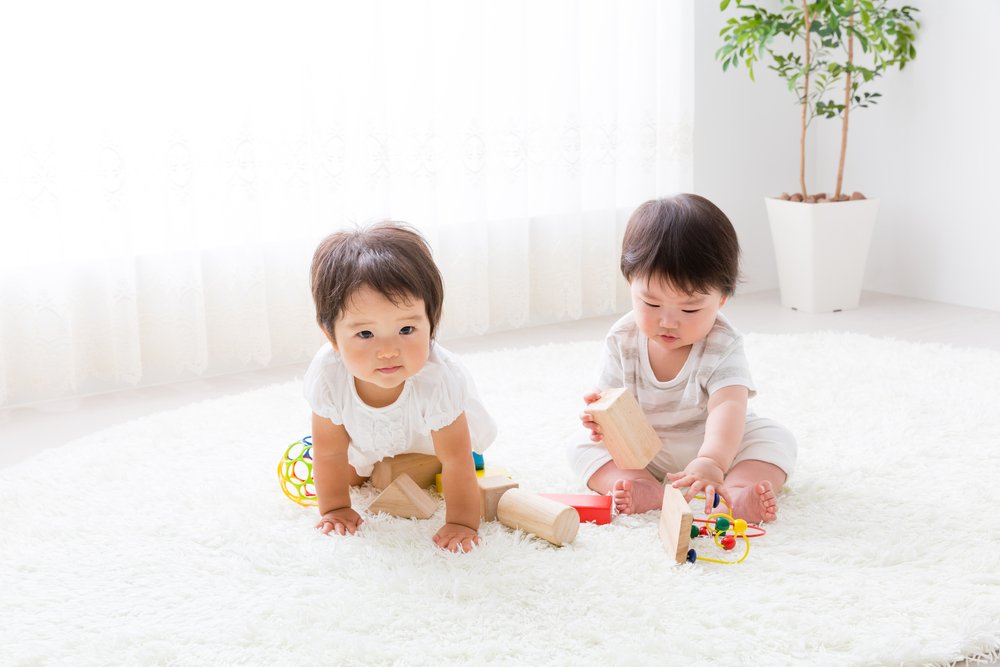Key points:
- Parallel play is a normal stage in a child’s development, where they play on their own but near their peers without significant cooperation between them.
- It is the fourth stage in the “play spectrum” and occurs during toddlerhood, allowing children to learn how to interact with other people.
- Parallel play lets children learn about other children’s emotions, reactions, and social situations, while experimenting with ease with their language and motor control.
- Parents can encourage parallel play through playdates or playgroups and imitating parallel play by sitting next to their child while they play, without interacting with their toys.
If your child is at the parallel play age, here’s what to keep in mind.
Play is an important part of your kid’s development since it contributes to their learning about their environment and how to relate with others. When kids are growing up, they pass through different stages in their play, learning different skills in each one.
Have you ever noticed two kids playing side-by-side in the sandbox without interacting? That is called parallel play and it is a completely normal stage in a child’s development.
How does parallel play develop?
For the first year or so of your baby’s life, playtime is a pretty solitary affair, because they are primarily learning about their environment by themselves and don’t know how to play with others just yet.
Then, they pass through the onlooker play stage, where they notice other kids are playing around them, but they don’t interact, just observe each other.
After this stage, when children are around two or three years old, they start participating in parallel play, where they play on their own but near their peers. Even if this might seem like a self-centered activity, it has benefits for your child’s later social development, especially in their language and in their understanding of social interactions.
In this stage, you’ll notice your toddler is starting to play near other children. Not necessarily playing together, but side-by-side. When children play near other kids without interacting or having significant cooperation between them, they are engaging in parallel play.
To provide an example, if you see your little one approach a group of children, pick up a doll, and play alone –without having the doll “talk” with other dolls or something similar– then your child is engaging in parallel play. This play differs from the onlooker play since in this there are few interactions between kids –like using the other children’s toys or copying their actions.
Parents may be confused as to why their child seems immersed in a game yet ignoring potential playmates. However, parallel play is a completely normal stage of development. It’s technically considered the fourth stage in the “play spectrum” and happens during toddlerhood.
Also, in parallel play, it might seem that kids are not interacting, but they are conscious of the presence of other children, watching them and even copying noises and grabbing the toys that other kids put down. You can also notice kids play this way when introduced to other children; it’s their way to enter the group.
Parallel play lets your little one learn how to interact with other people; they already know how to play by themselves and now they want to play but around their peers.
What you need to know about the parallel play:
- At this stage of development, your child is still too young to understand and deal with the complexity of having peers. Playing side-by-side independently is a great start! You might even notice your child mimicking the play of those around them, which is an important part of their development.
- Even if it may seem like a solitary experience, your little one is actually learning about other children and their emotions, reactions, and social situations. This style of play still allows your little one to experiment with ease with their language and motor control!
- Think of this as your child’s warm-up before actually engaging with peers.
- Many of Kinedu’s activities are great for encouraging parallel play! Use some of the available ideas to set play-dates for your little one, and don’t force both kids to interact or play together. Just let their inner creativity guide them into whatever they want to do, each on their own.
- Give your child positive praise and feedback for playing near friends. Be sure not to force your child to do anything too soon! Most likely, they aren’t being shy, they’re just moving through a normal phase of development.
Remember that at this stage, playing side-by-side with their peers will lead them into the later understanding of the social play, so try to take them into playdates or playgroups.
You can also imitate the parallel play with your little one sitting next to them while they play, but instead of playing with a toy, continue with your own task; this way your kid will notice and appreciate your presence, as they continue playing.
María Mirón is a psychology researcher with a Masters in Clinical Psychology. With over eight years of research experience, she has published and presented extensively on Early Childhood Development forums across the globe and is currently a professor of research methods at the University of Monterrey. She is on a mission to bridge the gap between the science of ECD and practical tools for parents.
Riley Stevenson is a writer and teacher from Portland, OR with a Masters in Media Studies and Education. She’s certified as an English as a Foreign Language instructor and Trauma-Informed Care provider. Riley spent five years working as a language arts teacher in Oregon public schools, where she served as a lead curriculum consultant. She’s interested in the development of early language skills, especially in the area of second language acquisition.









2 Responses
to help me with child development
Hi, if you need help with something specific please let us know by writing to us at hello@kinedu.com